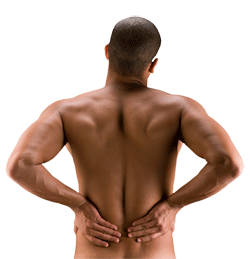
Lumbago is the general term referring to low back pain. The underlying causes of low back pain can be difficult to diagnose. It is important to give your therapist as much information as possible to help with the diagnosis - how does the pain feel? - what makes it worse or better? - does it affect your sleep? - is it localised or does it spread out? - is there any associated leg pain or weakness?
After an examination to determine the likely cause of your back pain, your therapist will be able to offer an appropriate treatment (manual therapy, osteopathy, electrotherapy, exercise, postural advice) or may have to refer you to a doctor or specialist.
The BackCare charity reports that almost half the adult population of the UK suffers from low back pain at some point during the year.
The following factors could contribute to back pain:
In 2000 the National Health Service spent over £1 billion on back pain related costs. In the private healthcare sector £565 million is spent on back pain every year.
The Health and Safety Executive estimated (in 1997) that musculoskeletal disorders, which include back pain, cost UK employers approximately £600 million per year.
The Department of Health in 1999 recorded that nearly 40% of back pain sufferers consulted their GP for help and 10% visited a practitioner of complementary medicine (osteopaths, chiropractors and acupuncturists).
When experiencing back pain it is very important to stay active. Bed rest will only make the pain worse. Physical exercise can be a very effective method to reduce the pain and discomfort that long-term pain sufferers experience.
Trouble with your back does not simply produce pain in the back. Often it may cause symptoms in more remote areas such as the buttocks, groin, hips and legs (commonly called sciatica). Problems in the spine and neck can also cause symptoms such as dizziness, headaches, clicking jaw, pins and needles and many more.
Indeed, research has shown that problems related to the back may affect over 60% of the UK's population at some stage in their lives.
Osteopaths are trained professionals who are skilled in diagnosing problems, including those which may require further investigation if necessary. Osteopaths have treated many hundreds of thousands of patients successfully over the past one hundred years and continued success is demonstrated by reliable and practical results.
Your osteopath will explain to you clearly what the problem is. If they can help they will explain what they can do to help and also offer advice on self-help treatments.
When young, the body can adapt easily to the stress and strain it is put under. As it grows older (over 25 years!) it begins to lose some of the elasticity which gives the body the flexibility to cope and adapt.
In particular this applies to the discs between the vertebrae and the joint cartilage. These require regular movement to ensure their maximum range and thereby increase local circulation and nutrition to the surrounding fluids and tissues.
10 top tips for back care:
